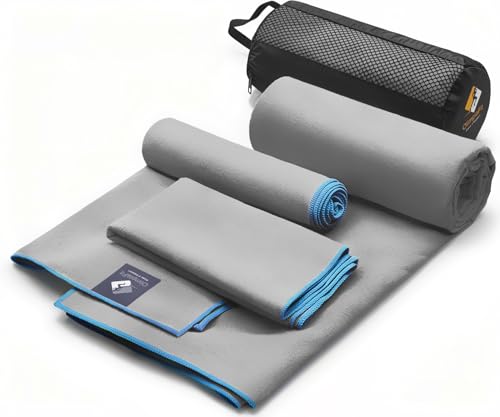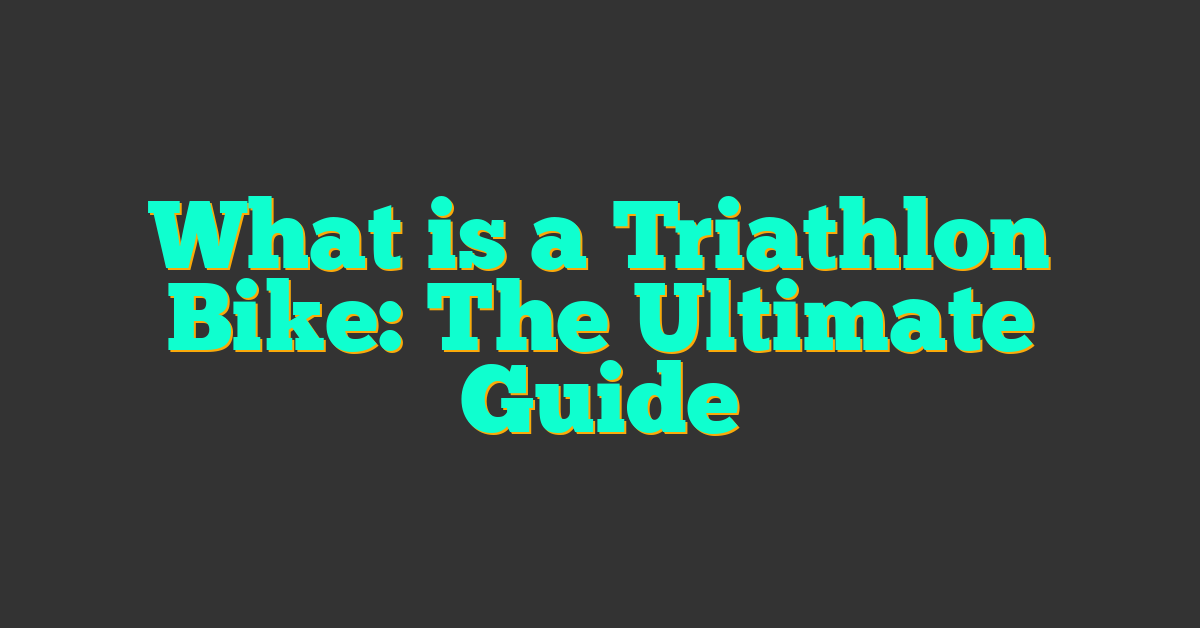If you’re a triathlete, you know that having the right gear can make all the difference in your performance. One of the most important pieces of gear for any triathlon is a wetsuit. Not only does it help you stay warm in cold water, but it also increases buoyancy and reduces drag. However, finding the right wetsuit can be a challenge, especially if you’re on a budget. That’s where discount triathlon wetsuit deals come in.

Discount triathlon wetsuit deals are a great way to get the gear you need without breaking the bank. Whether you’re a seasoned pro or just starting out, there are plenty of options available at prices that won’t leave you feeling like you’ve compromised on quality. But where can you find these deals, and how do you know which wetsuit is right for you? In this article, we’ll explore everything you need to know about discount triathlon wetsuit deals, from understanding the different types of wetsuits to finding the best deals online.
Key Takeaways
- Discount triathlon wetsuit deals can help you save money without compromising on quality.
- Understanding the different types of wetsuits and selecting the right one for your needs is essential.
- Shopping online is a great way to find the best deals on triathlon wetsuits.
Understanding Triathlon Wetsuits


If you’re new to triathlons, you might be wondering what a triathlon wetsuit is and why it’s necessary. Triathlon wetsuits are specially designed for swimming in open water and are made from neoprene, a type of synthetic rubber that provides insulation and buoyancy.
Materials and Technology
The type of neoprene used in a wetsuit can vary, with some brands using thicker neoprene for increased warmth and buoyancy, while others use thinner neoprene for greater flexibility and range of motion. Some wetsuits also feature textured panels on the arms and legs to improve hydrodynamics and reduce drag.
Wetsuits also incorporate various technologies to enhance their performance. For example, some wetsuits have a coating on the inside to make them easier to put on and take off, while others have a hydrophobic coating on the outside to repel water and reduce drag.
Wetsuit Fit and Sizing
Getting the right fit is crucial when it comes to choosing a triathlon wetsuit. A wetsuit that is too loose will allow water to enter and reduce buoyancy, while a wetsuit that is too tight can restrict movement and cause discomfort.
When selecting a wetsuit, pay attention to the sizing chart provided by the manufacturer. Wetsuits are typically sized based on height and weight, but some brands may also take chest, waist, and hip measurements into account.
It’s also important to try on a wetsuit before purchasing it to ensure a proper fit. A wetsuit should fit snugly but not be too tight, with no gaps between the suit and your skin. If you’re between sizes, it’s generally recommended to go with the larger size.
Overall, a triathlon wetsuit is an essential piece of gear for open water swimming. By providing insulation, buoyancy, and improved hydrodynamics, a wetsuit can help you swim faster and more efficiently. Just make sure to choose a wetsuit that fits properly and is made from quality materials to get the most out of your investment.
Selecting the Right Wetsuit
https://www.youtube.com/watch?v=4M_i2Fywssg&embed=true
When it comes to triathlon, choosing the right wetsuit can make all the difference. It’s important to select a wetsuit that fits well, provides the right amount of buoyancy, and is suitable for your skill level.
Wetsuit Types for Different Skill Levels
Beginners should opt for a wetsuit that is easy to put on and take off, comfortable to wear, and provides ample buoyancy. Full-sleeve wetsuits are ideal for beginners as they provide extra buoyancy, making it easier to stay afloat. Intermediate and elite triathletes can opt for a sleeveless or short-sleeved wetsuit, which allows for greater range of motion and increased flexibility.
Temperature and Buoyancy Considerations
The water temperature is a key factor to consider when selecting a wetsuit. A thicker wetsuit is ideal for colder water temperatures, while a thinner wetsuit is suitable for warmer water temperatures. The thickness of a wetsuit also affects its buoyancy. Thicker neoprene provides greater buoyancy, while thinner neoprene provides less buoyancy.
When selecting a wetsuit, it’s important to consider the buoyancy levels. A wetsuit with more buoyancy will keep you higher in the water, which can help improve your swimming speed and efficiency. However, too much buoyancy can make it difficult to swim properly, so it’s important to find a balance that works for you.
In conclusion, selecting the right wetsuit is crucial for a successful triathlon. Consider your skill level, water temperature, and buoyancy requirements when choosing a wetsuit. With the right wetsuit, you’ll be able to swim faster, more efficiently, and with greater comfort.
Essential Triathlon Gear
https://www.youtube.com/watch?v=1VWvnIA7Q_g&embed=true
When it comes to triathlon, having the right gear is essential. Not only does it help you perform better, but it also keeps you comfortable and safe throughout the race. In this section, we’ll go over some of the essential gear you’ll need for a triathlon.
Swim Accessories
Swimming is the first leg of a triathlon, and having the right gear can make all the difference. Here are some essential swim accessories you’ll need:
- Swimming goggles: A good pair of swimming goggles will help you see clearly underwater and protect your eyes from chlorine or saltwater. Look for goggles that fit comfortably and have anti-fog lenses.
- Wetsuit: A wetsuit is essential for open water swimming, as it provides buoyancy and insulation. You can find wetsuits at a variety of price points, but be sure to choose one that fits well and allows you to move freely.
- Swim cap: A swim cap keeps your hair out of your face and helps you stay visible in the water. Look for a cap that fits snugly and is made of a durable material.
Transition and Post-Swim Gear
After you finish the swim leg, you’ll need to transition to the bike leg. Here are some essential gear items for the transition and post-swim:
- Backpack: A backpack is a great way to carry all your gear to the transition area. Look for a backpack that is lightweight and has plenty of pockets to keep your items organized.
- Footwear: You’ll need a pair of shoes to wear during the bike leg and the run leg. Look for shoes that are comfortable and provide good support for your feet.
- Jacket, shirts, pants, shorts, and socks: Depending on the weather, you may need to wear a jacket, shirt, pants, shorts, or socks during the race. Look for items that are made of moisture-wicking fabric and provide good ventilation.
- Water bottle: Staying hydrated is key during a triathlon, so be sure to bring a water bottle with you. Look for a bottle that is easy to carry and has a secure lid.
- Watch: A watch can help you keep track of your time and pace during the race. Look for a watch that is waterproof and has a stopwatch function.
In conclusion, having the right gear is essential for a successful triathlon. By investing in quality gear that fits well and meets your needs, you’ll be able to perform at your best and enjoy the race.
Wetsuit Maintenance and Care
« Deep Squat for Improved Spinal Mobility, Pelvic Stability, and Ankle Flexion
DIY Ice Bath: All You Need to Know for a Quick Recovery »
https://www.youtube.com/watch?v=DNfPhF3_7MQ&embed=true
Taking care of your triathlon wetsuit is important to ensure its longevity and performance. Proper maintenance can also save you money in the long run by avoiding costly repairs or replacements. Here are some tips to help you maintain and care for your wetsuit.
Cleaning and Storage
After each use, rinse your wetsuit with fresh water to remove any salt, sand, or dirt. You can also use a wetsuit shampoo to clean your wetsuit thoroughly. Avoid using hot water or a washing machine as it can damage the neoprene material.
When storing your wetsuit, make sure it is completely dry and out of direct sunlight. Avoid folding or creasing the wetsuit as it can damage the neoprene. Instead, hang it up on a wetsuit hanger or lay it flat on a towel.
Repair and Longevity
To ensure the longevity of your wetsuit, it is important to repair any tears or holes as soon as possible. You can use a wetsuit repair kit or take it to a professional wetsuit repair service. Regularly inspect your wetsuit for any signs of wear and tear, such as thinning neoprene or loose seams.
Investing in anti-chafing products can also help prolong the life of your wetsuit. Applying a lubricant such as Body Glide or petroleum jelly to areas prone to chafing can prevent damage to the neoprene and increase comfort during long swims.
By following these simple tips, you can ensure the durability and value of your triathlon wetsuit. Proper maintenance and care will not only extend the life of your wetsuit but also improve your overall swimming performance.
Where to Find the Best Deals

If you’re looking for discount triathlon wetsuit deals, there are several places you can check. Both online and local stores offer great deals, but it’s important to know where to look and what to look for.
Online Shopping Tips
Online shopping is a great way to find deals on triathlon wetsuits. One of the best places to start is Wetsuit Wearhouse. They offer a wide selection of wetsuits at discounted prices, including popular brands like Vanquish. You can also sign up for their email newsletter to receive exclusive deals and promotions.
Another way to find deals online is to check out weekly specials on websites like XTERRA WETSUITS. They offer up to 72% off on the best-selling triathlon wetsuit brand in North America. You can also find closeout sales on websites like Wetsuit Wearhouse, where they offer up to 50% off on select wetsuits.
When shopping online, it’s important to pay attention to sizing charts and reviews. Make sure to measure yourself and compare your measurements to the sizing chart provided by the manufacturer. You can also read reviews from other customers to get an idea of how the wetsuit fits and performs.
Local Stores and Seasonal Sales
If you prefer to try on wetsuits in person, check out your local sporting goods stores. They may offer seasonal sales on triathlon wetsuits, especially during the off-season. You can also check out local triathlon events, where vendors may offer discounts on wetsuits.
When shopping at local stores, it’s important to try on the wetsuit to make sure it fits properly. You should also consider the water temperature you’ll be swimming in. If you’ll be swimming in cold water, make sure to choose a wetsuit that’s designed for cold water swimming.
In conclusion, finding the best deals on triathlon wetsuits requires a bit of research and patience. Whether you choose to shop online or in person, make sure to pay attention to sizing and reviews, and choose a wetsuit that’s designed for your specific needs.
Frequently Asked Questions
https://www.youtube.com/watch?v=13Bjb2dsPxk&embed=true
What should I look for when choosing a wetsuit for my first triathlon?
When choosing a wetsuit for your first triathlon, there are a few things to consider. First, make sure the wetsuit fits you well and is comfortable. You don’t want a wetsuit that is too tight or too loose. Second, consider the thickness of the wetsuit. The thickness you need will depend on the water temperature of the triathlon you are participating in. Third, look for a wetsuit that is durable and will last you a long time. Finally, consider the price and look for a wetsuit that fits your budget.
Where can I find the best deals on women’s triathlon wetsuits?
If you’re looking for the best deals on women’s triathlon wetsuits, there are a few places you can look. First, check online retailers like Amazon and eBay. Second, check out local triathlon shops and sporting goods stores. Finally, check out websites like Triathlete and Wetsuit Wearhouse for sales and discounts.
How do I decide between buying a used wetsuit and a new one for triathlons?
When deciding between buying a used wetsuit and a new one for triathlons, there are a few things to consider. First, a used wetsuit may be cheaper than a new one, but it may not fit you as well. Second, a used wetsuit may have some wear and tear, which could affect its performance. Finally, a new wetsuit will come with a warranty, which a used wetsuit may not have. Ultimately, the decision between buying a used or new wetsuit will depend on your budget and personal preference.
What are the benefits of purchasing an Xterra or Orca triathlon wetsuit?
Xterra and Orca are two popular brands of triathlon wetsuits. Both brands offer a variety of wetsuits at different price points. The benefits of purchasing an Xterra or Orca triathlon wetsuit include high-quality materials, durability, and a comfortable fit. Additionally, both brands offer wetsuits with different thicknesses and buoyancy levels to suit different triathlon conditions.
Is it necessary to have a triathlon-specific wetsuit, or will a regular wetsuit suffice?
While it is possible to use a regular wetsuit for a triathlon, it is recommended to use a triathlon-specific wetsuit. Triathlon wetsuits are designed specifically for the sport and offer features like increased buoyancy, flexibility, and reduced drag. Additionally, triathlon wetsuits are often allowed to be thicker than regular wetsuits, which can provide better insulation in colder water.
What are the recommended wetsuit thicknesses for different triathlon water temperatures?
The recommended wetsuit thicknesses for different triathlon water temperatures are as follows:
- Water temperature above 78°F (26°C): No wetsuit required
- Water temperature between 72-78°F (22-26°C): Wetsuit thickness of 1.5-2mm
- Water temperature between 65-72°F (18-22°C): Wetsuit thickness of 3-4mm
- Water temperature below 65°F (18°C): Wetsuit thickness of 5mm or more
It’s important to note that these are just recommendations and you should always check the specific rules and regulations of the triathlon you are participating in.










